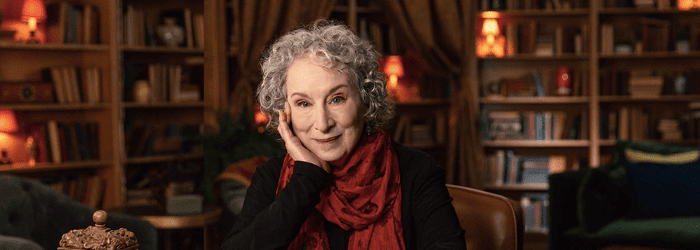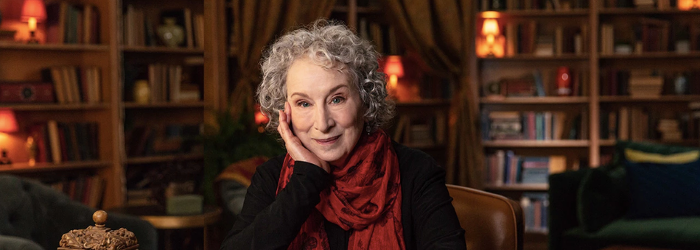
I wrote about MasterClass a couple of months ago in my review of James Patterson’s course on Writing – and this month, I’ve been enjoying Margaret Atwood’s course on Creative Writing.
In case you don’t want to head back to that post, I’ll quickly recap the basics of MasterClass itself here:
What’s MasterClass?
MasterClass is a well-established brand with a website that offers courses from many big names in the writing world. (There are also loads of other courses on topics from cooking to tennis, also from some household names.)
All the courses are structured as a series of short video lessons, usually roughly 10 minutes long, though this does vary from course to course. Most courses have about 20 lessons.
MasterClass is priced at $90 for a single class – which gets you lifetime access – or $180/year for the All-Access Pass.
If you want to take several classes within a year, then, it’s definitely worth going for the All-Access Pass. You’ll also get two extra months added onto your subscription if you persuade any of your friends to sign up.
For more about the pricing and about MasterClass itself, take a look at my previous review here.
Margaret Atwood’s MasterClass
This time round, I picked Margaret Atwood’s MasterClass to listen to. I’ve enjoyed many of her novels over the years – particularly The Blind Assassin, for a literary take on SF – and I also really enjoyed Negotiating With the Dead: A Writer on Writing, which is a compilation of a series of lectures.
You might well know her best as the author of The Handmaid’s Tale, recently adapted into an award-winning TV series.
I was confident, then, that Atwood would have some valuable advice to dispense in the MasterClass course, and I wasn’t disappointed.
Overview
Like all the MasterClass courses, this one had high production values. The video and audio quality were again superb – and I found it very easy to navigate between lessons using the website interface. The whole thing felt polished and professional, which you’d hope for, at the price.
The lessons cover similar ground to Patterson’s, but from a more literary and creative perspective: this is the sort of material you might find on a university course about creative writing. There’s discussion of story and plot, structure, point of view, creating characters, dialogue, and much more.
Atwood comes across as authoritative and very knowledgeable – but not at all stuffy in her approach. There’s a sense of a real depth behind her advice, but she talks in a friendly way (comparing, for instance, the building blocks of story to “a giant Lego set”).
What’s Great About the Course
While the lessons are short, Atwood packs a lot in. Compared with the Patterson course, the material felt like it had been well considered in advanced – there’s loads of great advice here. As with that course, too, the videos are handily divided into individual lessons, with each lesson broken into chapters.
I particularly liked that Atwood gave lots of concrete examples along the way. For instance, when she talks about ways to start a story, she uses the example of Little Red Riding Hood, and explains several ways in which that story could be told (one option, for instance, is starting with the grandmother’s perspective inside the wolf).
Again, as with MasterClasses other courses, you can leave comments below the lesson videos to talk with other course members. These looked like they came in sporadically, though – with often several days between comments – and didn’t tend to be answered. If you’re looking for a course that involves plenty of interaction with other students, this probably isn’t the one for you.
The PDFs supplied with each lesson had quite a different format from the ones that come with the Patterson course: I definitely preferred these ones, as they had a detailed summary of key points that Atwood made. You could read these instead of listening to a lesson and still get a fair amount of value out of the course.
I also liked that Margaret Atwood wasn’t at all afraid to speak her mind and to call out things that she disagrees with, like what she describes as a “false distinction” between character-driven and plot-driven novels.
What’s Not So Great About the Course
I’m not a huge fan of video courses (I like to be able to skim read – and easily go back to bits I want to re-read), so I’d really have liked transcripts for the course. To be fair, though, the PDFs do contain good summaries.
The format itself is a bit limiting: in many cases, I’d have liked to hear more from Margaret Atwood on a particular topic. When a big subject like “structure” has to be covered in a 10 minute video, there’s obviously a limit to how much advice can be given! A lot was packed in, though, and even if you’ve read a fair few blogs and books on writing, you’ll pick up some great ideas and tips here.
Should You Give MasterClass a Try?
If you’re going to pick only one course to go for, the Margaret Atwood one is a great option. It covers a lot of ground, the PDFs are really clear and helpful, and Atwood is a pleasure to listen to as she talks about craft.
The $90 price tag does seem quite a lot to pay for a single course. When I looked at the amount of material provided, though, I found that the total run time of all the lesson videos came to about 3 hrs 45 minutes. That means you’re paying about $24/hour for Atwood’s advice, which is comparable to many writing courses or conferences.
It’s definitely best value, though, to opt for an All-Access Pass if you’re planning to watch more than a couple of courses within a year. That way, you can have as many courses as you want.












